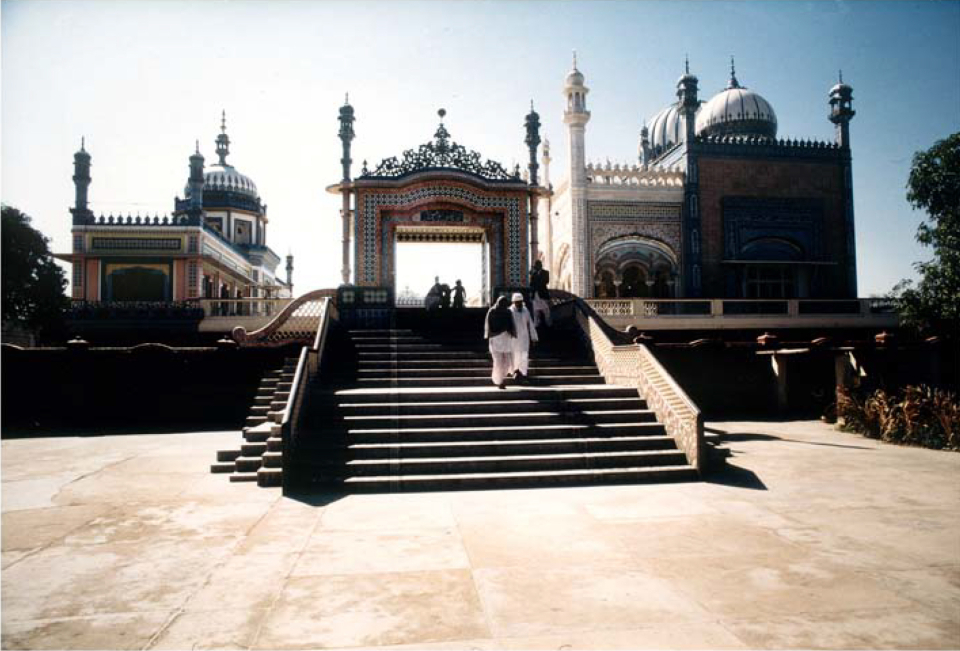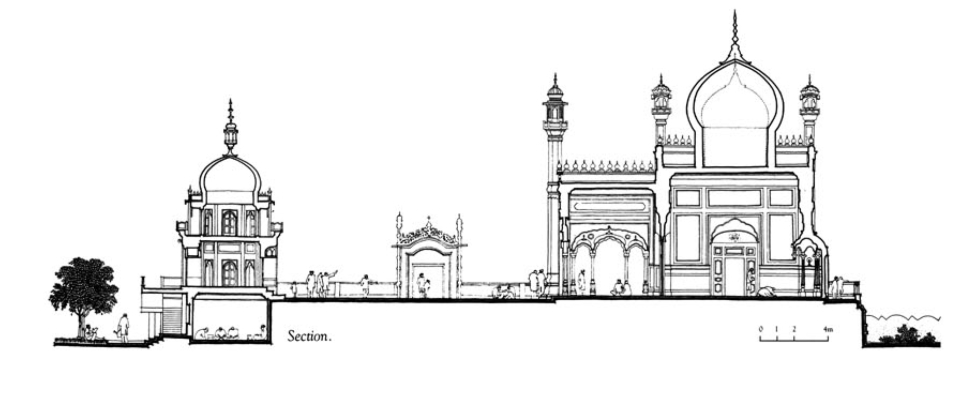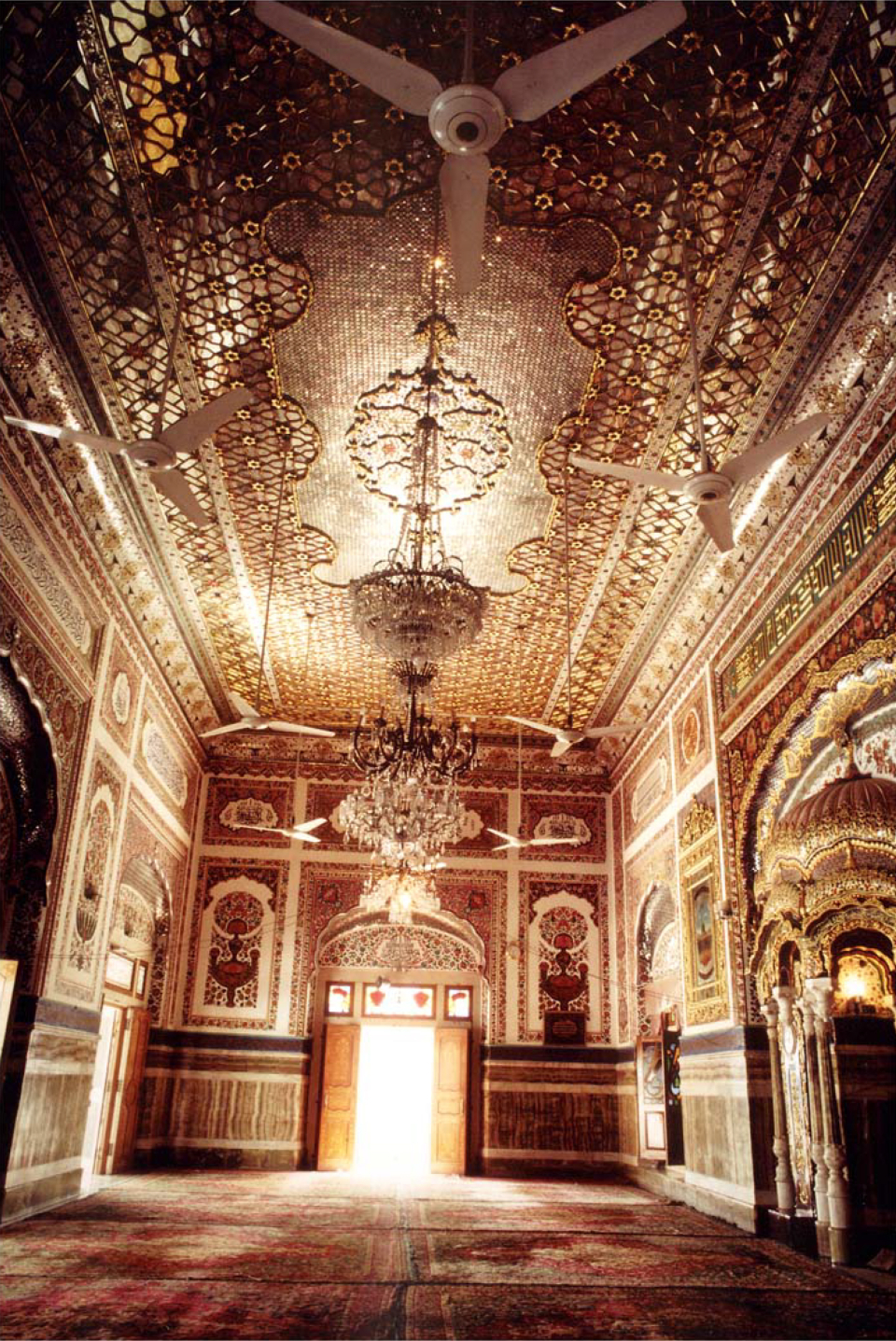Bhong Mosque enshrines and epitomises the popular taste in Pakistan with all its vigour, pride, tension and sentiment. Its use, and misuse, of signs and symbols expresses appropriate growing pains of an architecture in transition.
The late Rais Ghazi Mohammad, the landlord of a large estate, began this project in 1932 in Bhong village, the most important of the scattered villages on his vast property. The mosque was to be the most glorious building in his palace compound which also included a smaller mosque, a madrasa and rooms for students. The work of specialists gathered from all over Pakistan and India (master masons and craftsmen from Rajasthan, calligraphers and painters from Karachi), the compound was designed and constructed over a period of nearly 50 years. Broadly eclectic in their use of sources, the builders borrowed stylistic elements from nearby Lahore, as well as Iran, Spain and Turkey, and combined them with Western colonial elements of the 1940s.
Materials and crafts used range from the traditional (teak, ivory, marble, coloured glass, onyx, glazed tile work, fresco, mirror work, gilded tracery, ceramic, calligraphic work and inlay) to the modern and synthetic (marbleised industrial tile, artificial stone facing, terrazzo, coloured cement tile and wrought iron). Only traditional materials were used in the mosque interiors. In the words of the jury: Bhong enshrines and epitomises the popular taste in Pakistan with all its vigour, pride, tension and sentiment. Its use, and misuse, of signs and symbols expresses appropriate growing pains of an architecture in transition. - Aga Khan Awards, 1984-1986 Cycle Jury citation




